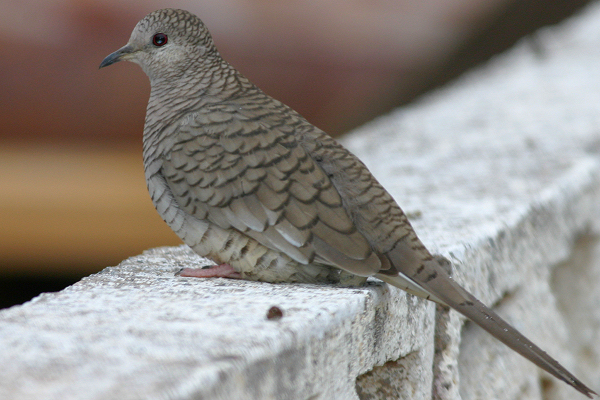
Location: Arizona
Date: 2005-01-25
Lens: Canon 400mm F5.6

 Inca Dove
Columbina inca
Inca Dove
Columbina inca
 Description
DescriptionThe Inca Dove is sensitive to cold and has developed several behaviors for survival. First, in order to keep warm, several doves may roost in such close proximity as to form a pyramid. They huddle with their feathers fluffed, wing to wing, one on the back of the other, facing downwind in a sheltered, sunny site. They may form two or three row pyramids for about one hour. Next, Inca Doves will sun themselves by raising a wing and rolling slightly to one side. After a while they roll back and raise the other wing. Finally, the Inca Dove can lower its body temperature to avoid the effects of a cold night. Forages on the ground for seeds (grass, weed, and grains).
Pale gray-brown body. Darker on back and upperwings. Appears "scaly" throughout (including back and belly). Blue orbital ring. Black bill. Cinnamon inner webs of primaries visible in flight, and occasionally at rest. Long tail, slightly rounded at tip, and is brown with black edges, and white on the outermost tail feathers. Pinkish-gray legs and feet. Juvenile similar to adult. Sexes similar. 8 inches in length.
Dry desert-like areas with mesquite and cactus, cities, towns, lawns, parks and gardens, fields, and farms.
 Nesting
Nesting2 white eggs. The eggs have a 14 day incubation period. Fledging occurs in 14-16 days. The nest is made from small twigs and built in a low tree or bush. Young birds are fed "crop milk", which is a fluid from a storage chamber off of the esophagus.